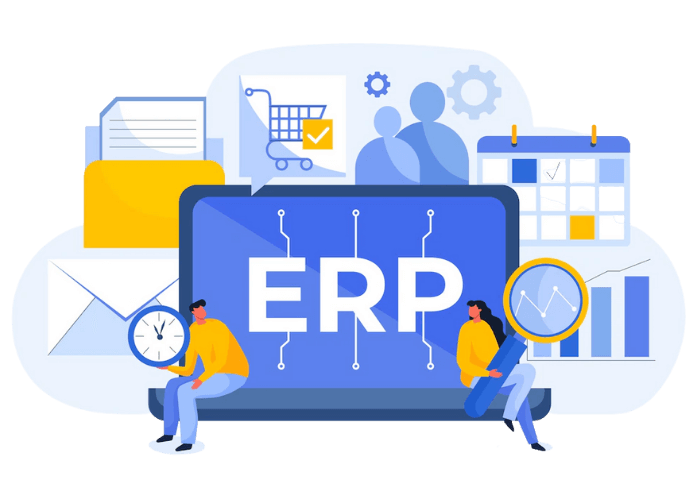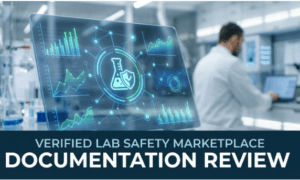Running a business without the right tools often feels like trying to solve a puzzle with missing pieces. Processes get chaotic, data is scattered across systems, and decisions are often delayed due to lack of clarity. This is where Enterprise Resource Planning (ERP) software comes in—designed to streamline operations, centralize data, and provide actionable insights for growth.
But how do you know if your business is ready for ERP software? This blog offers a comprehensive checklist to help you identify the telltale signs and determine whether it’s time to make the switch. If you’ve been wondering whether ERP is the next logical step, read on.
What is ERP Software, and Why Does It Matter?
ERP software is a centralized system that integrates your core business functions—finance, inventory, sales, HR, and more—into a single platform. Instead of juggling multiple tools that don’t communicate with each other, ERP ensures seamless collaboration and data flow across departments.
Why does this matter for businesses in Saudi Arabia? With the government’s Vision 2030 initiative driving economic diversification and digital transformation, companies must adopt technologies that enhance efficiency, transparency, and scalability. ERP software helps you stay competitive by providing:
- Real-time insights for better decision-making.
- Automated workflows that reduce errors and save time.
- Scalability to support growth and expansion.
The Challenges Businesses Face Without ERP Software
Many businesses begin with simple tools like spreadsheets and standalone software to manage their operations. While these solutions may work initially, they often fall short as the business grows. Here are some common challenges businesses face when operating without ERP software:
- Disorganized Workflows: Teams rely on different tools, leading to inefficiencies and communication gaps.
- Lack of Operational Visibility: Without a unified system, leaders struggle to gain a clear picture of performance across departments.
- Manual Processes: Dependence on spreadsheets and paper-based systems leads to errors, delays, and wasted resources.
- Data Silos: Different departments operate independently, making it hard to share critical information.
- Regulatory Compliance Challenges: Meeting local tax laws, accounting standards, and labor regulations becomes difficult without a robust system.
These pain points not only hinder productivity but also make it challenging to compete in a rapidly evolving market. If these issues sound familiar, it might be time to explore ERP solutions tailored to your needs.
For a trusted ERP partner in Saudi Arabia, visit: https://www.halsimplify.com/
But how do you know if it’s time to make the switch? Let’s explore some clear signs that indicate your business could benefit from ERP software.
Signs Your Business Needs ERP Software
If you’re experiencing any of the following signs, it’s time to consider an ERP solution.
-
Struggling with Disjointed Systems
Do your teams rely on multiple disconnected tools for finance, inventory, HR, and customer management? If these systems don’t talk to each other, you’re likely wasting time transferring data manually. ERP software integrates all your operations into a single platform, streamlining workflows and ensuring everyone has access to accurate, up-to-date information.
-
Poor Data Visibility and Reporting
Decision-making suffers when you don’t have real-time insights. Businesses without ERP often rely on outdated or incomplete data, leading to poor forecasting and missed opportunities. An ERP system provides dashboards and analytics, giving you a 360-degree view of your business performance.
-
Dependence on Manual Processes
Manual data entry isn’t just time-consuming; it’s prone to errors. For example, a typo in a financial report or an incorrect inventory count can lead to costly mistakes. ERP automates routine tasks like order processing, payroll, and reporting, reducing human error and freeing up your team for higher-value activities.
-
Increasing Complexity with Business Growth
As your business expands, so do the complexities of managing it. Whether you’re opening new branches, entering international markets, or scaling your workforce, your current systems might struggle to keep up. ERP software is built to grow with your business, offering the scalability and flexibility needed to support expansion.
-
Inventory Management Issues
Are you frequently running out of stock or overstocking products? Poor inventory management can lead to lost sales or wasted resources. ERP software provides real-time tracking, helping you optimize stock levels and reduce inefficiencies.
-
Trouble Meeting Compliance Requirements
Saudi Arabia’s regulatory environment is evolving, particularly with initiatives like e-invoicing (Fatoorah). If your current systems make compliance a headache, ERP software can help by automating tax calculations, generating compliant invoices, and maintaining audit-ready records.
-
Customer Service Gaps
Customer expectations are higher than ever. If your team struggles to provide quick, personalized responses due to disconnected systems, it’s time to invest in ERP. By centralizing customer data, ERP ensures your sales and support teams have the information they need to deliver exceptional service.
-
High Operating Costs
If your operating costs are rising without a corresponding increase in efficiency or revenue, it’s a sign that your current systems may not be optimized. ERP software helps reduce costs by automating processes, minimizing errors, and streamlining workflows, ensuring better resource utilization.
Let’s examine some of the common benefits of ERP software for your business.
Benefits of Adopting ERP Software
Investing in ERP software can solve the challenges outlined above while delivering additional benefits:
- Centralized Data: Eliminate silos and gain a unified view of operations.
- Improved Productivity: Automate repetitive tasks, enabling teams to focus on strategic goals.
- Better Decision-Making: Use real-time analytics to identify trends and make informed choices.
- Cost Savings: Optimize inventory, reduce waste, and avoid costly errors.
- Regulatory Compliance: Stay up to date with local and international regulations effortlessly.
- Scalability: Support your growth journey without overhauling your systems.
If you’ve checked off several items on the above checklist, it’s time to explore ERP solutions.
How To Get Started With ERP Software
Follow these steps to get started:
- Conduct a Needs Analysis: Evaluate your current processes and identify pain points. What challenges are you facing? What features do you need in an ERP system?
- Research ERP Vendors: Look for solutions tailored to your industry and business size. For Saudi businesses, ensure the ERP system complies with local regulations like VAT and e-invoicing.
- Set a Budget and Timeline: Determine how much you’re willing to invest and establish a realistic timeline for implementation.
- Involve Key Stakeholders: Engage department heads and IT teams early in the process. Their input will ensure the chosen solution meets your business’s unique needs.
- Plan for Training and Change Management: ERP implementation isn’t just about technology; it’s about people. Ensure your team is trained to use the new system effectively.
Conclusion
Recognizing the signs that your business needs ERP software is the first step toward unlocking its full potential. Whether you’re struggling with disjointed systems, manual processes, or compliance challenges, an ERP solution can provide the tools you need to thrive in today’s competitive market.
With ERP software, you can streamline operations, improve decision-making, and scale your business with confidence. If you’re ready to take the next step, start by evaluating your current processes and exploring ERP solutions tailored to your industry. By acting now, you’ll position your business for long-term success in a rapidly evolving economy.



































